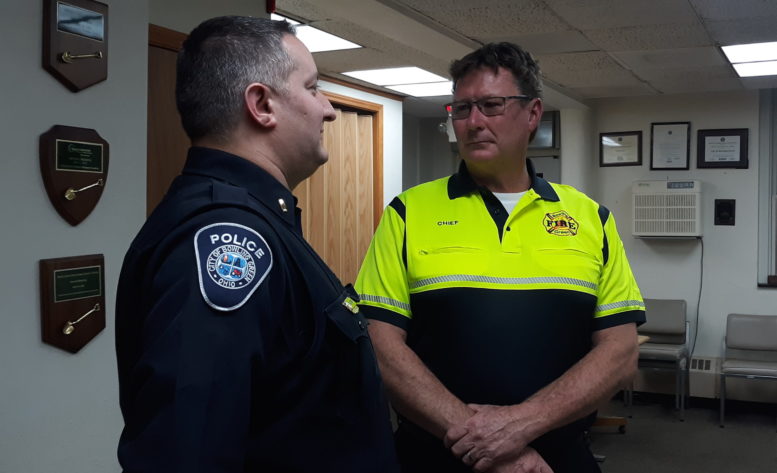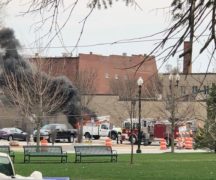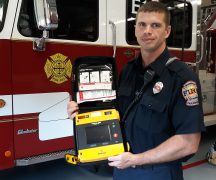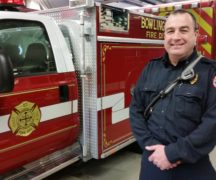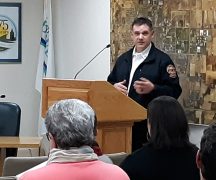By JAN LARSON McLAUGHLIN
BG Independent News
When Bowling Green residents call 911 for medical emergencies, an ambulance will be sent. But the patient may not be taken to a hospital.
Due to the frequency of area hospitals declaring “bypass” status, Bowling Green Fire Division and other EMS services in the county have implemented a patient prioritization system.
In the past few weeks, Bowling Green Fire Division has had to use the prioritization system four times, according to Fire Chief Bill Moorman.
The goal is to keep the emergency patient demands manageable at hospitals in Bowling Green, Toledo and Findlay.
“We want to help prevent them from being overwhelmed and having to go on EMS bypass,” Moorman said Monday evening as he explained the new process during a Bowling Green City Council meeting.
“We want to make sure everyone who needs to be treated gets treated,” the fire chief said.
The recent rash in hospitals declaring bypass status is due to heightened numbers of COVID patients and lower numbers of hospital staff. When hospitals alert emergency services about the need for bypass, they close their doors to EMS.
“We want to help alleviate stress in hospitals from non-emergency patients,” Moorman said.
So when three or more primary hospitals in the region go to bypass, the Bowling Green Fire Division will implement a system called Alternative Standard of Care (ASOC).
When responding to a 911 call, the paramedics will consult with the department’s medical director to determine if the patient requires transportation to a hospital emergency room. If the patient doesn’t require ER care, the paramedics will talk with the patient about other options. Those may include Falcon Health Care, an urgent care facility, or the patient’s personal physician’s office.
But Moorman stressed that BG ambulances will show up when called.
“We are going to respond when we get a 911 phone call,” he said. And decisions of where to transport patients will be made very carefully. “We will always err on the side of caution.”
That may result in patients needing to be transported to hospitals further away, the chief said. And that itself could cause issues since Bowling Green has three ambulances and the distances will create longer transportation times.
“If there’s any doubt, we will make sure they get to a hospital,” Moorman stressed.
Other EMS departments in the county will also be alerted through Wood County communications if bypass status is declared by three or more of the following hospitals – Wood County, St. Luke’s, Toledo, St. Vincent’s, and Blanchard Valley.
During the past few weeks, when BGFD had to use the ASOC priority ranking, patients have been transported to alternative facilities – and seem to understand the reasoning, Moorman said.
“Anybody who has wanted to be transported has been transported to a facility,” the chief said.
Bowling Green residents are being urged to call EMS only when needed.
“Calling EMS for non-emergent needs could prevent someone from receiving help in a life-threatening situation,” citizens are being advised.
Moorman also emphasized that despite bypass situations, BGFD is fully staffed and prepared to serve the needs of Bowling Green.
Some life-threatening conditions which warrant EMS or transportation to a hospital ER include:
- Having a stroke (facial droop, arm weakness, speech difficulty).
- Having a heart attack.
- Being unconscious, unresponsive or not responding appropriately.
- Having been in a car accident and appearing to have broken bones.
- Bleeding uncontrollably.
- Having a seizure.
- Experiencing shortness of breath or difficulty breathing.
- Having a severe allergic reaction.
- Experiencing severe burns.
- Poisoned.
- Overdosing on too much medication, on purpose or by accident, including drug misuse or abuse.

